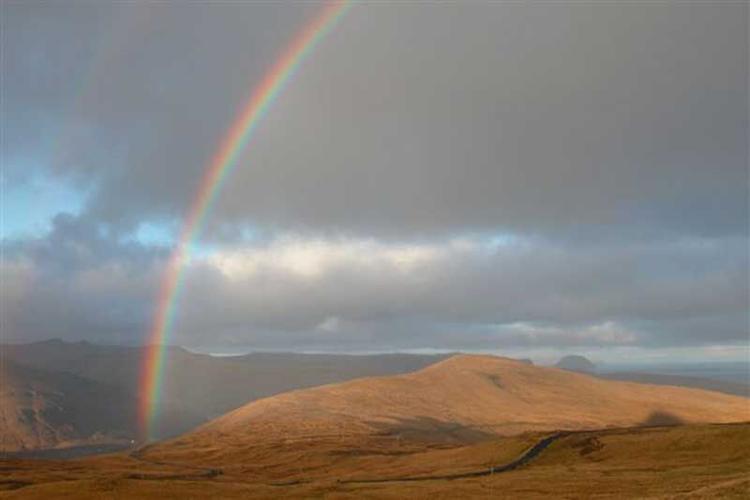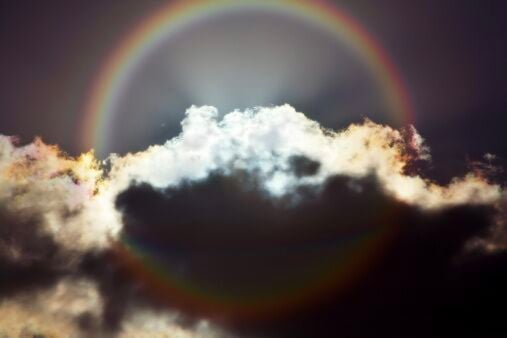The Short Answer: FACT!!!
What Causes a Rainbow?
A rainbow is caused by sunlight and atmospheric conditions. Light enters a water droplet, slowing down and bending as it goes from air to denser water. The light reflects off the inside of the droplet, separating into its component wavelengths--or colors. When light exits the droplet, it makes a rainbow.
If you had no idea at all about what a rainbow is or what causes it, you might actually believe some of the legends that different ancient cultures have created to explain it. Rainbows are among the most beautiful of nature’s displays.

Rainbow at Suuroy, Faroese Islands. Photo by Erik Christensen.
A rainbow isn’t really a “thing” and it doesn’t exist in a particular “place.” It is an optical phenomenon that appears when sunlight and atmospheric conditions are just right—and the viewer’s position is just right to see it.

Image Credit: NOAA
When can you see a rainbow?
A rainbow requires water droplets to be floating in the air. That’s why we see them right after it rains. The Sun must be behind you and the clouds cleared away from the Sun for the rainbow to appear.
Why is a rainbow a bow—or arc?
A full rainbow is actually a complete circle, but from the ground we see only part of it. From an airplane, in the right conditions, one can see an entire circular rainbow.

From a flying plane, you might see a full-circle rainbow. Credit: NOAA.
What happens in the water droplets?
The sunlight shines on a water droplet. As the light passes into the droplet, the light bends, or refracts, a little, because light travels slower in water than in air (because water is denser). Then the light bounces off the back of the water droplet and goes back the way it came, bending again as it speeds up when it exits the water droplet.

Light enters a water droplet, bending as it slows down a bit going from air to denser water. The light reflects off the inside of the droplet, separating into its component wavelengths—or colors. When it exits the droplet, it makes a rainbow. Image Credit: NOAA
Why the colors?
Sunlight is made up of many wavelengths—or colors—of light. Some of those wavelengths get bent more than others when the light enters the water droplet. Violet (the shortest wavelength of visible light) bends the most, red (the longest wavelength of visible light) bends the least. So when the light exits the water droplet, it is separated into all its wavelengths. The light reflecting back to you, the observer with the Sunlight coming from behind you, from the water droplets will appear separated into all the colors of the rainbow! Violet will be on the bottom and red on the top.
What makes a double rainbow?

A secondary rainbow appears if the sunlight is reflected twice inside the water droplets. Secondary rainbows are fainter, and the order of the color is reversed, with red on the bottom. Credit: Leonardo Weiss via Wikimedia Commons.
Sometimes you can see another, fainter secondary rainbow above the primary rainbow. The primary rainbow is caused from one reflection inside the water droplet. The secondary rainbow is caused by a second reflection inside the droplet, and this “re-reflected” light exits the drop at a different angle (50° instead of 42° for the red primary bow). This is why the secondary rainbow appears above the primary rainbow. The secondary rainbow will have the order of the colors reversed, too, with red on the bottom and violet on the top.

Image Credit: NOAA



























